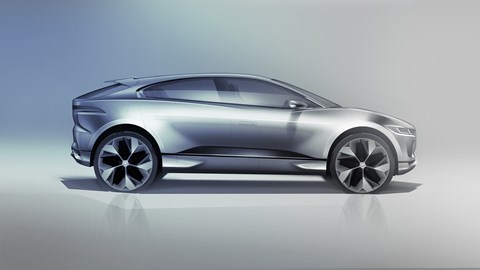► An ode to beautiful car design
► Why design has been neutered
► But EVs could herald a renaissance
Car designers do not like to be called stylists. The word ‘styling’, most will tell you, is far too superficial to describe what they do. Styling is just ornamentation. Design, on the other hand, involves packaging, proportions and overall conception.
Style is mere appearance. Design is the essence of the car.
Well, that may be true. But as I look around me, I think the world could do with more car style – or at least more distinctive design. Back when style was a fashionable word, cars often offered an emotional expression that most modern cars sorely miss. Why is no modern car as beautiful as an E-Type, as perfectly proportioned as a Miura, as pure as a Porsche 550 Spyder, as futuristic as a Citroën DS, as sleek as a 1982 Audi 100 or as flamboyant as a Harley Earl Cadillac? Or as cleanly functional as the first Range Rover, or as cute as a classic Mini or a ’50s Fiat 500?
Why does General Motors no longer run its Motorama auto extravaganza road shows, which travelled the US like a rock star’s tour, showcasing the latest models and new concepts, and giving Americans a glimpse of tomorrow’s world? Now, brand new Chevys and Cadillacs sit unnoticed on suburban driveways, relics of yesteryear rather than pioneers of tomorrow.
Sadly, the car as a cultural icon is also increasingly a past phenomenon. Don McLean is not going to sing about taking a Chevy Spark to any levee, any more than the Beach Boys will lament your daddy taking your Ford EcoSport away. I can’t see Janis Joplin (or her successors) singing about a new Mercedes GLA, either.
No car has generated any significant cultural impact over the past 20 years, partly because car design has largely been in stasis. Cars demand more technical and design creativity than any other product. That’s one reason they fascinate me. But, for today’s generation, they are, alas, no longer such magnetic objects of desire.

There are some exceptions, of course. But if I look back over 20 years to those new cars that made me salute their design or styling exceptionalism, the list is short: Audi A2, Discovery 3, Maserati Quattroporte, Ferrari 458, Skoda Yeti, BMW i8, Range Rover Velar, Rolls-Royce Wraith, Ferrari Roma and, more recently, the Jaguar i-Pace and Honda E. Yet apart from the i-Pace’s cab-forward stance, none previews a bold new architecture.
The common excuse is that new safety regulations stifle creative freedom. This is mostly nonsense. These strictures are more than compensated by advances in materials, manufacturing and computerised design.
Rather, we need to look at the management of car companies. Design now is rarely the unfiltered expression of gifted individuals. Rather, new cars are the products of committees including brand specialists and marketeers, their opinions shaped by focus groups with a firm grasp on the compromises of today rather than the prospects of tomorrow. Every layer of bureaucracy turns potential artistry into certain mediocrity.
Perhaps most significantly, today’s car makers lack ambition; that wonderful sense of the possible that the auto industry broadcast so alluringly in the ’50s and ’60s. They helped to define modern life, not follow its trends. This want of aspiration, this wariness of change, is why it took a Silicon Valley disrupter, run by a rebel, to show us the electric future.
Yet a 21st century renaissance of automotive artistry is possible, even probable. As cars enter their bold new electric phase, so the rusty old grease-and-oil stigma will go. Its societal sins partly expunged, it’ll be okay for young people to love cars again. What’s more, electric cars herald an abundance of exciting opportunities. EVs have fewer components and, as these get progressively smaller, so the styling opportunities get richer.
Tomorrow’s car designers will have more freedom than ever. And why design a new battery-powered phone when you could design (or style) a new battery-powered car?